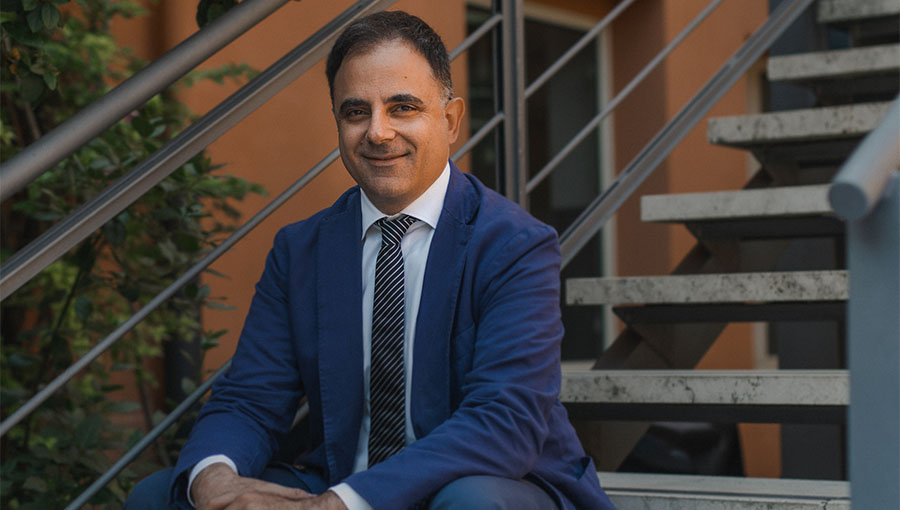History Professor Fabrizio Conti Interviewed by Identity Style Magazine
JCU History Professor Fabrizio Conti was recently interviewed by Identity Style, a Milan-based fashion and lifestyle magazine, whose brand ambassador is fashion designer Tomaso Trussardi. In his interview, in Italian, titled “Italian style between history, culture and enlightened entrepreneurship,” Professor Conti discussed the relationship between Italian style, fashion and culture, by focusing on the contributions that Renaissance and humanistic culture has provided and still provides to the development of a distinctly Italian visual identity.
More specifically, Professor Conti highlighted how Italy is known, respected, and perhaps even envied around the world because of the specificity of its style and traditions. Italian style and traditions are, in turn, intrinsically and inextricably linked to the country’s history and culture. “Italian-ness” is the core of a very strong and globally recognized identity, precisely because it is based on historical and cultural roots that are almost unique but at the same time varied. It is an identity that is history, and an identity that becomes a brand.

Professor Conti pointed out how the Italian Renaissance, the intellectual and artistic movement that was born in the 1400s, and Humanism, which is the cultural trajectory that preceded it and made it possible, are the engines that started the most innovative and stylistically relevant developments of the time, not only in Italy, but in Europe as a whole. It is not by chance that Leonardo da Vinci’s “Vitruvian Man” was chosen to represent the Italian identity on the one Euro coins: a man of perfect proportions and balance, a universal man, according to the Renaissance model, that is, a man who “can do anything if he wants to,” as the Renaissance architect Leon Battista Alberti would say. Humanism and Renaissance change forever man’s relationship with himself, as he finally becomes aware of himself and his own potential; he wants to know, to understand, to represent, and in doing so he creates a style. He does so with a visual perspective different from the past, and he does so by exalting – rediscovering classical culture – the beauty of forms, including female forms, as in Sandro Botticelli’s paintings, as in his Venus, an unparalleled synthesis of Renaissance art and Neoplatonic philosophy in Medici-era Florence.
Brunello Cucinelli, the fashion designer and entrepreneur considered the “king of cashmere” is an important example of the marriage of entrepreneurship and appeal to humanistic culture in creating a successful formula. Surrounding Cucinelli’s rise in style and market is a direct reference to the Renaissance and its humanistic roots. With his “Humanistic Capitalism,” Cucinelli aims to renew the way of doing business. He shows that he wants to combine economic profit with a purpose that almost transcends it, characterized by a high attention to issues of social responsibility, and allocating an important part of that profit for social but also cultural purposes, such as the construction of a Universal Library in the village of Solomeo, near Perugia. The appeal to the concepts – even spiritual – of the humanistic tradition is an integral part of this corporate identity, so much so that Cucinelli also wanted Benedictine Cassian Folsom, former prior of the monastery in Norcia – a direct reference to Umbrian traditions – on his Board of Directors in order to be vigilant on that respect for the dignity of the worker, which is also “dignity of man,” a theme so dear to Cucinelli – to whom he has also dedicated a huge monument in the valley of Solomeo – and dear to the Renaissance tradition, as the famous “Oration on the dignity of man” of Giovanni Pico della Mirandola indicates.
“I really like the Renaissance idea of beauty,” Professor Conti concludes. The one that can be admired in the Uffizi in Florence, in the Municipal Palace in Siena, in the rooms of the popes and in the Sistine Chapel in the Vatican as well as in the Villa Farnesina in Rome, and in many other places all around Italy. In a sense, the Renaissance represents that almost perfect union between “power and imagination,” which are the cipher of this Renaissance identity that is also Italian identity. The multiplication of the courts of the period represents the multiplication – not the flattening – of places of power that nevertheless invested – certainly also for self-celebratory purposes – in cultural enterprises aimed at the search for beauty and the production of meaning through imagination: a creative search that is worth, in Professor Conti’s opinion, defining beauty itself as such.
Read the Identity Style article here (pages 126-129).
Fabrizio Conti (Ph.D., Central European University, 2011) is a lecturer in History at John Cabot University in Rome and an Arts and Humanities Advisor at the American Academy in Rome. Prof. Conti’s teaching and research interests span the Late Antique, Medieval, and Renaissance periods, with an interdisciplinary approach to religious and cultural developments, and a focus on the history of magic and witchcraft. Currently, Prof. Conti is working on a textbook for university students on the history of magic and witchcraft to be published with Routledge. Among his publications are the volume co-edited with Stefan Lorenz Sorgner Humanisms and Beyond: Past, Present, and Future of the Humanities in Liberal Arts Education, (Trivent, 2023), another co-edited with Elizabeth Ann Pollard Magic in the Roman World (8th c. BCE – 5th c. CE) (Trivent, 2022), the edited volume Civilizations of the Supernatural: Ritual, Witchcraft, and Religious Experience in Late Antique, Medieval, and Renaissance Traditions, with a foreword by Teofilo F. Ruiz (Trivent, 2020), as well as the monograph Witchcraft, Superstition, and Observant Franciscan Preachers: Pastoral Approach and Intellectual Debate in Renaissance Milan (Brepols, 2015). Prof. Conti has worked in the catacombs of Rome as a docent and in the Vatican Secret Archive as an archivist, besides appearing in several TV documentary series.





